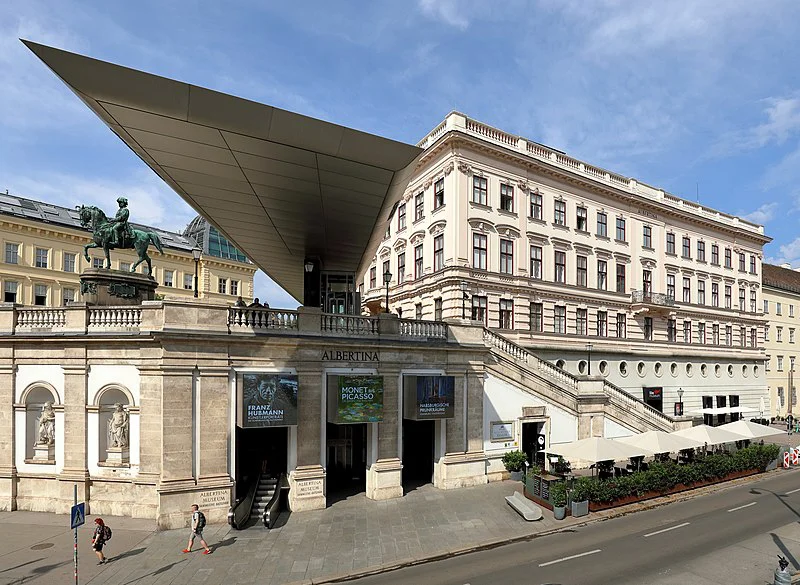Since when can the works of art in the Kunsthistorisches Museum be admired? Which Habsburgs were particular art lovers and who is considered the actual founder of the collection? Which paintings will you miss here? A world-renowned art museum where you can view the great old masterpieces . It displays the private collections of the Habsburgs .
The building itself is an architectural work of art and is located on the Vienna Ringstrasse. Particularly impressive are the entrance hall, the staircase and the Dome. Gustav Klimt immortalized himself at the staircase with a cycle of pictures about the different art movements.
The Kunsthistorisches Museum (KHM) is divided into the following departments:
- The Picture Gallery – The KHM boasts the largest Bruegel collection outside Belgium. Large works by Rubens stand out, as well as by Albrecht Dürer, Rembrandt, Titian, Raphael and Velazquez. Paintings by French painters were rarely collected. It should not be forgotten that the Habsburgs were at loggerheads with the French most of the time, apart from the examples of marriage policy (Marie-Antoinette with Louis XVI and Marie-Louise with Napoleon)
- The Kunstkammerwhich has been resplendent in its new splendor since March 2013, dates back to the chambers of art and curiosities of the late Middle Ages, the Renaissance and the Baroque period . 2,200 different objects are on display in 20 rooms . These collections were the forerunners of the painting collection and underlined the ruler’s creditworthiness. The objects have a value that cannot be measured in numbers today. The masterpiece of the Kunstkammer is the
“Saliera ” – agolden salt cellar by Benvenuto Cellini from the 16th century. Nowadays, the only comparable Kunstkammer is the Green Vault in Dresden, where similar objects can be viewed. - The Egyptian-Oriental Collection houses a real treasure in Vienna with a remarkable 17,000 objects. The Habsburgs were passionate collectors and this department bears witness to this.
- The Collection of Classical Antiquities is no less worth seeing for all fans of Greek and Roman art.
- Attention coin fans: The Coin Cabinet on the top floor comprises the most extensive collection in Austria and is the fifth largest coin cabinet in the world alongside London, Paris, Berlin and St. Petersburg.
How did the Habsburg collections come about?
The Austrian line of the Habsburgs gathered their Works of art from the 15th century onwards in Vienna, Prague, Innsbruck and Graz. Ferdinand I (1503-1564) had set up a chamber of art and curiosities in the Vienna Hofburg . In 1656, the governor of the Spanish Netherlands, Archduke Leopold Wilhelm, moved his 1,400 paintings by Italian and Dutch masters from Brussels to Vienna.
He is regarded as the actual founder of this unique picture gallery. Through marriage and inheritance , an incredible treasure had been amassed in the Stallburg over the centuries. Emperor Franz I Stephan, husband of Maria Theresa, was the founder of the rich natural history collections, the coin collection and the Tapestries. Vienna has one of the largest collections of tapestries in the world next to Madrid!
In 1781 , the Habsburg paintings were brought together in Belvedere Palace and
The domed twin buildings of the two court museums, the Kunsthistorisches Museum and the Naturhistorisches Museum, designed by Gottfried Semper and Carl von Hasenauer , were intended to provide an appropriate setting for the treasures of art and nature that had been accumulated over four centuries .
Accessible to all since 1891
The museum has been open to the public since October 22, 1891 , initially only at weekends and only accessible in your best outfit and with clean shoes. This has changed to the extent that the museum is open every day except Monday (during the winter). In summer and during the high season, it is open every day.
Time Travel Tip: A museum break with a café and cake in the Kuppelhalle is a real treat. The view of Maria-Theresien-Platz and the twin building of the Natural History Museum opposite is also included. Please note: only possible with an admission ticket! The museum store is well frequented and offers nice gifts as well as beautiful memories of the museum.
More info: Kunsthistorisches Museum: Kunsthistorisches Museum Wien (khm.at)
Image source: https://pixabay.com/de/photos/wien-vienne-kunsthistorisches-museum-221578/



